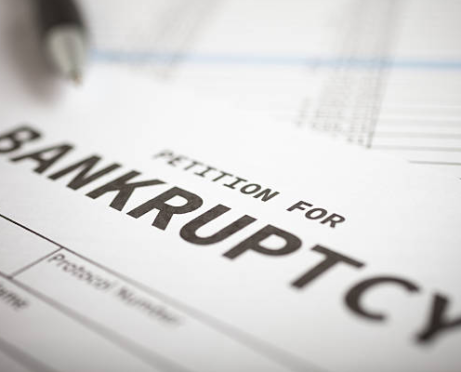
How you take money out of your retirement accounts is one of the largest decisions you have to make when planning your retirement. The decision impacts how much you have to spend and how long your funds will last. Perhaps no other decision has so great an impact on your quality of life and peace of mind in retirement.
For those who plan well in advance, a retirement distribution strategy has probably been a part of the planning considerations from day one. Unfortunately, circumstances dictate planning for many people, when obviously it would be better to have planning dictate your circumstances.
See How Your 401(k) Stacks up in Minutes — Start by Getting Your Free Analysis >>
Factors That Influence Your Retirement Distribution Needs
Whether you are in an enviable retirement funding position or not, there are a number of factors that influence your financial needs, and thus your retirement distribution needs.
Time Horizon
People are living longer and longer. This complicates retirement planning.
It wouldn’t be good to run out of money at any age. And now you need to plan on the possibility of a very long retirement.
Living for 30 years after retirement isn’t uncommon. Soon that may be true for living 40 years after retirement. Planning for a longer life generally means that you have to spend less per year. Planning for a longer life also increases uncertainty. Older ages correlate with increased medical costs.
Medical Costs
The future is uncertain, and the future of medical costs even more so. Modern medicine, coupled with other factors, has people living increasingly long lives.
This does not, however, mean that they live them free of medical problems or costs. Allocating resources in retirement to deal with medical contingencies, including long-term care, is an essential of sound planning.
Inflation
In the United States, we have been experiencing a period of benign inflation for quite some time. But even at this low level, the cumulative effects are significant.
Costs, and thus needs, are likely to double or quadruple across a long retirement. And that’s just if inflation doesn’t become a real problem again. It’s better to hedge inflation than to count on a miracle.
Manage Your 401(k) Today — Start by Getting Your Free Analysis >>
Volatility
A long-term retirement necessitates maintaining a growth-oriented investment approach in order to keep up with or outpace inflation. But growth-oriented investments are volatile. To avoid having to liquidate assets when they’re down, you will need to have some assets — a couple of years’ worth of expenses — in a non-volatile position.
This means that they also have less potential to earn, which is fine. It’s more important that they are there to spend, no matter what the markets do. But the pool of assets funding your long-term retirement is therefore smaller, as some assets are earmarked for shorter-term needs and not in a growth position.
Taxes
Retiring does not allow you to escape the IRS. Nothing does. Any spendable need is after taxes. You will need to gross-up your requirements so you can allocate for taxes and spend what is left.
Income Sources
You need retirement assets to fund your expenses over whatever base of other incomes you may have. Social Security benefits and any pension income form your base. However, these generally don’t keep pace with inflation, so the portion needed from your retirement assets grows across time.
The average monthly Social Security benefit in retirement is just over $1,400. But there is a great variation in individual benefit amounts, so don’t rely on the average. Instead, use a good estimate of your own number.
Your desired lifestyle determines what you need. Other factors, as described above, also influence that need. From there, you can consider a retirement distribution strategy. There are two main types: capital retention and capital depletion.
See How Your 401(k) Stacks up in Minutes — Start by Getting Your Free Analysis >>
Capital Retention
A capital retention retirement strategy keeps your principal intact, while you live off of the earnings. Or, in most cases, a portion of the earnings.
Remember that goods and services get more expensive over time, and that your Social Security and pensions probably won’t keep up with inflation. That means your assets will have to fund an increasingly large portion of your retirement across time.
So if your capital is going to remain intact across your lifetime, it will need to keep growing in order for you to be able to fund these future — larger — needs.
Capital retention has some great benefits. Many people want to use a capital retention strategy in order to pass assets on to their heirs. They get to live off of the money during retirement, but what they have accumulated goes on to their beneficiaries. A win-win for sure.
Capital retention keeps the principal intact, which gives you more options if things go bad. Or even just not super well. If inflation increases your needs significantly, you still have that pool of money. If you have large unforeseen medical expenses, you have resources.
Capital retention is a conservative approach that allows you a great deal of flexibility in retirement. But it also requires you to accumulate a lot of money.
Build Your Personalized Portfolio in Minutes — Start Investing >>
Capital Depletion
A capital depletion retirement strategy has you live off a combination of principal and earnings, such that at some distant future point, you’ll run out of money. The key is that you aim for this to happen after the longest you reasonably expect to live in retirement.
If you’re quite certain you won’t live more than 30 years into retirement, you plan on needing money for maybe 35 or 40 years. This gives you a little cushion. Not much, but a little.
To make sure that you don’t run out of money early, you must plan carefully. Higher-than-expected inflation or unexpected medical expenses can throw plans off. Using conservative assumptions and allowing for contingencies is essential.
A capital depletion strategy is the more common than the capital depletion method. It’s not because this is what people prefer. It’s simply because funding a capital depletion strategy requires less savings. People often can’t afford anything more. No matter how much they wish to leave a legacy, it may not be practical.
An Example
Let’s consider a simple example. Marion is planning her retirement and would prefer to use a capital retention retirement distribution strategy because she wants to pass the principal of her retirement accounts to her niece and nephew.
She has determined she will need $20,000 per year over her social security income, and she plans to retire at age 60. Longevity and good health run in her family. Marion also assumes that she will achieve an average annual return of seven percent on her invested assets, and that inflation will remain relatively benign at three percent per year.
Get Recommended Stock Picks — Stock Advisor Is Here to Help >>
If Marion were to use a capital depletion strategy based on a 30-year retirement, she would need to accumulate $353,000 to fund her needs over and above her Social Security income.
Should she wish to move that out to 40 years, her need at retirement would increase to $405,000. To fund her retirement on a capital retention basis, she would need $667,000, withdrawing three percent each year to fund her desired retirement.
Retirement Distribution Strategies: The Bottom Line
The assumptions you make about the variables and contingencies have a significant impact on what you need in retirement. Or if retirement is around the corner and you have built all you can, these assumptions dictate how much you can afford to take from your accounts and have a reasonable expectation that your money will last throughout your retirement.
If your retirement is near, then you need to figure out how much you can afford to spend. Unfortunately for many people, this will be less than they would like to spend.
If retirement is still some ways down the road, you have time. There is still time to influence your ability to live a comfortable retirement by accumulating additional assets. No one has ever really regretted accumulating too much for retirement. The worst of that scenario is that you live a more comfortable life or pass more money down to your heirs.
It's all about investing in the future you — plan now to build yourself a better tomorrow.





